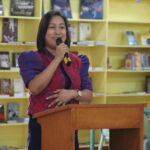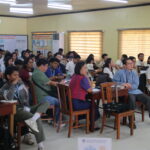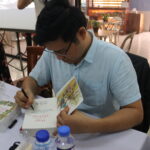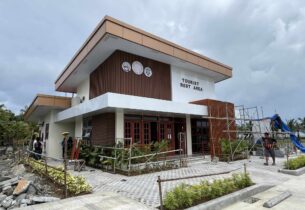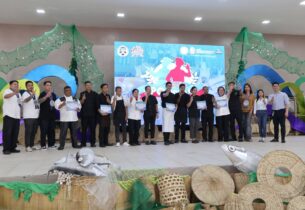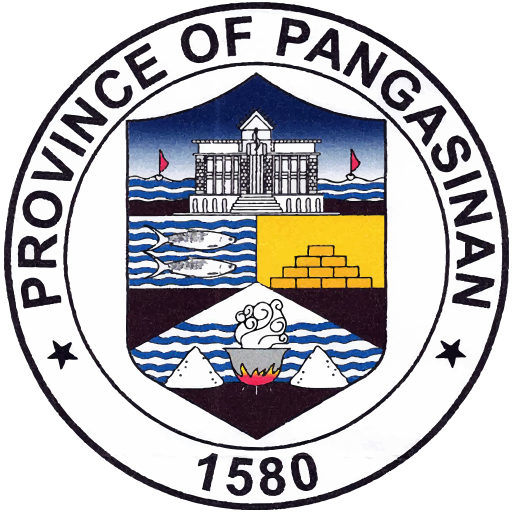LINGAYEN, Pangasinan–The Provincial Tourism and Cultural Affairs Office (PTCAO) and the Provincial Library hosted a compelling book talk on February 24, 2025, featuring historian Ian Christopher B. Alfonso and his book, Dogs in Philippine History.
The event, held at the Pangasinan Provincial Library, brought together students from Pangasinan Polytechnic College, PTCAO, Office of the Provincial Veterinarian, and Provincial Library staff, book enthusiasts, journalists, and dog lovers who are eager to explore the deep historical connections between Filipinos and their canine companions. The program opened with a warm welcome from Provincial Library Head Ms. Ma. Cynthia Encarnita F. Vila, who highlighted the importance of broadening historical knowledge in Pangasinan. “We are delighted to welcome this additional history to Pangasinan,” she said, emphasizing the significance of Alfonso’s research in enriching the province’s understanding of its past.
PTCAO Department Head Ms. Maria Luisa Amor-Elduayan followed with an inspiring message that challenged the audience: “If dogs can affect change, what more can Pangasinenses do for Pangasinan?” Her words encouraged reflection on the role of individuals in preserving history and fostering progress.
Ian Christopher B. Alfonso, an assistant professor at the University of the Philippines Diliman and a board member of the Philippine Historical Association, captivated the audience with his extensive research on the role of dogs in Philippine society. A former historian at the National Historical Commission of the Philippines (NHCP), Alfonso’s research interests are Philippine precolonial and early colonial history, the Philippine Revolution, toponymy, cultural heritage and management, animal history, and the local history of Manila Bay communities. His book, Dogs in Philippine History, delves into how dogs were more than just pets—they were hunters, guardians, warriors, and even symbols of social status in precolonial communities. A key highlight of the discussion was Smoky, a small Yorkshire Terrier who became a war hero during World War II and played a vital role in the Lingayen Gulf Landings, a significant event that led to the liberation of Luzon. Discovered in a foxhole in Papua New Guinea and later adopted by U.S. Army Corporal William A. Wynne, Smoky became an invaluable asset to military operations. In early 1945, she was tasked with a daring mission—running a telecommunication wire through a narrow 60-foot pipe under the field along the Lingayen Beach. This small but crucial act prevented the need for open-trench digging, which could have exposed soldiers to enemy fire. Her bravery not only saved lives but also demonstrated the intelligence and loyalty of war dogs.
Smoky’s contributions extended beyond the battlefield. She was recognized as the “Best Mascot for the Southwest Pacific” by Yank Down Under, a wartime Allied magazine, for her service. Additionally, she became the world’s first recorded therapy dog. When Wynne was hospitalized with dengue fever at the 233rd Station Hospital in New Guinea, Smoky’s presence significantly aided his recovery. Dr. Charles Mayo, the hospital’s commanding officer and founder of the Mayo Clinic, observed her positive impact and allowed her to stay, pioneering the idea of animal-assisted therapy. After the war, Smoky continued to uplift soldiers, performing tricks and providing comfort in hospitals across the U.S. and abroad. Her story paved the way for modern therapy dog programs, proving that even the smallest companions can leave an indelible mark on history.
Alfonso’s discussion shed light on the invaluable contributions of dogs in shaping historical narratives. He emphasized that stories like Smoky’s serve as reminders of the enduring bond between humans and animals, especially in times of war and adversity. The event concluded with an engaging discussion and a book signing session, leaving attendees with a newfound appreciation for the historical significance of dogs. Through this book talk, Alfonso not only honored the contributions of dogs throughout Philippine history, but also inspired the audience to reflect on their roles in preserving the past and fostering positive change in their communities.
/MJSE
Photos: MRTE


